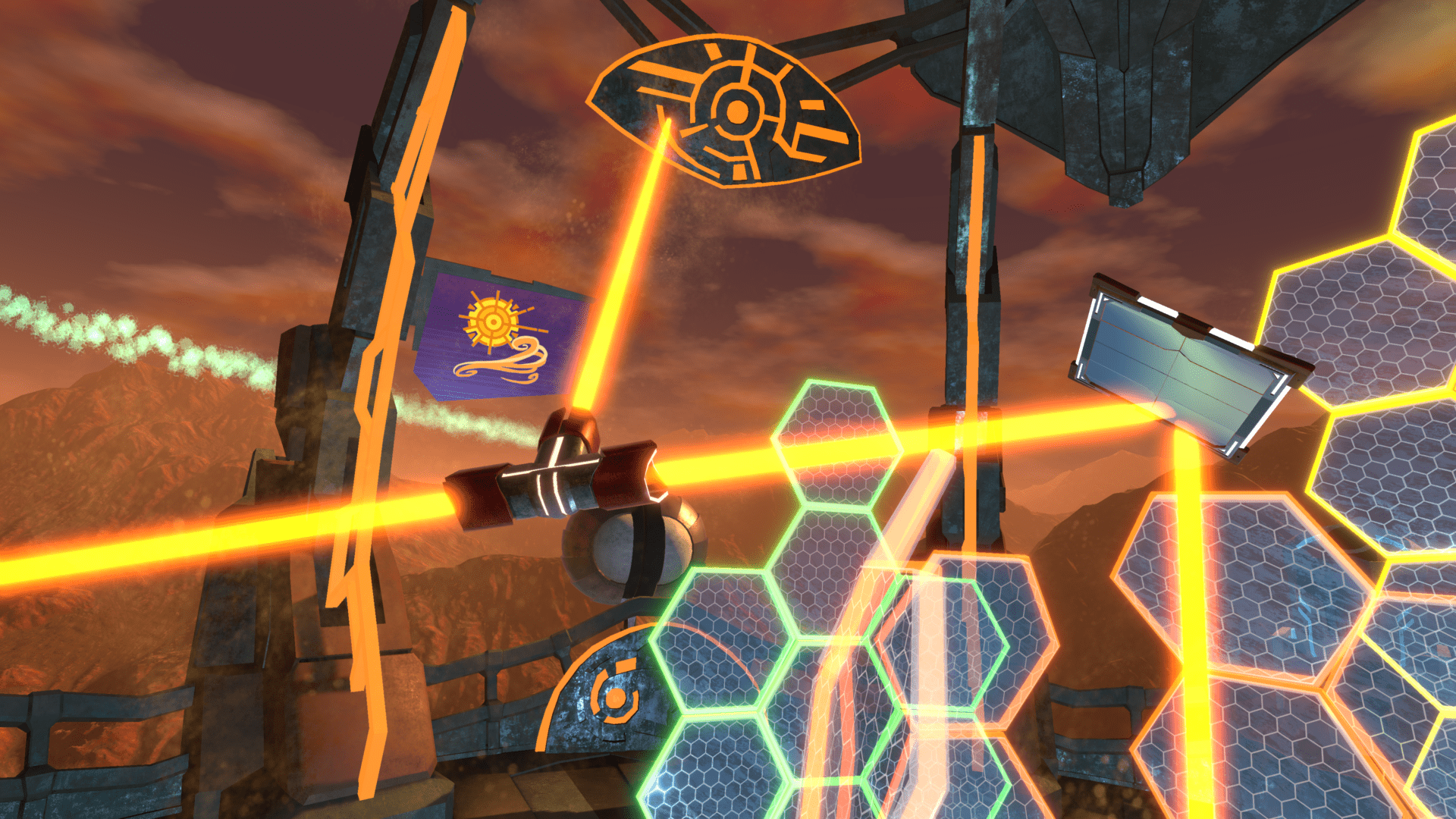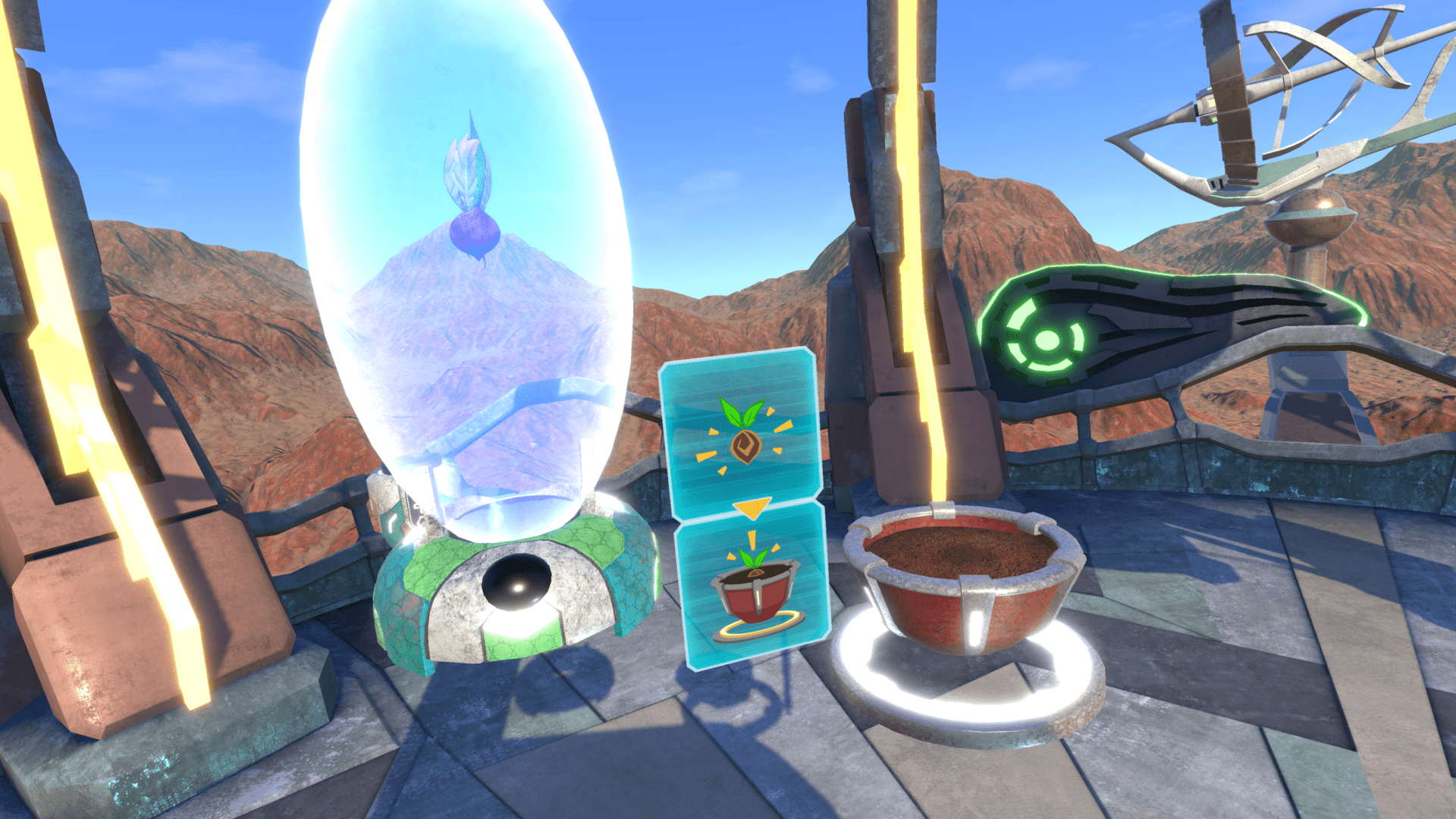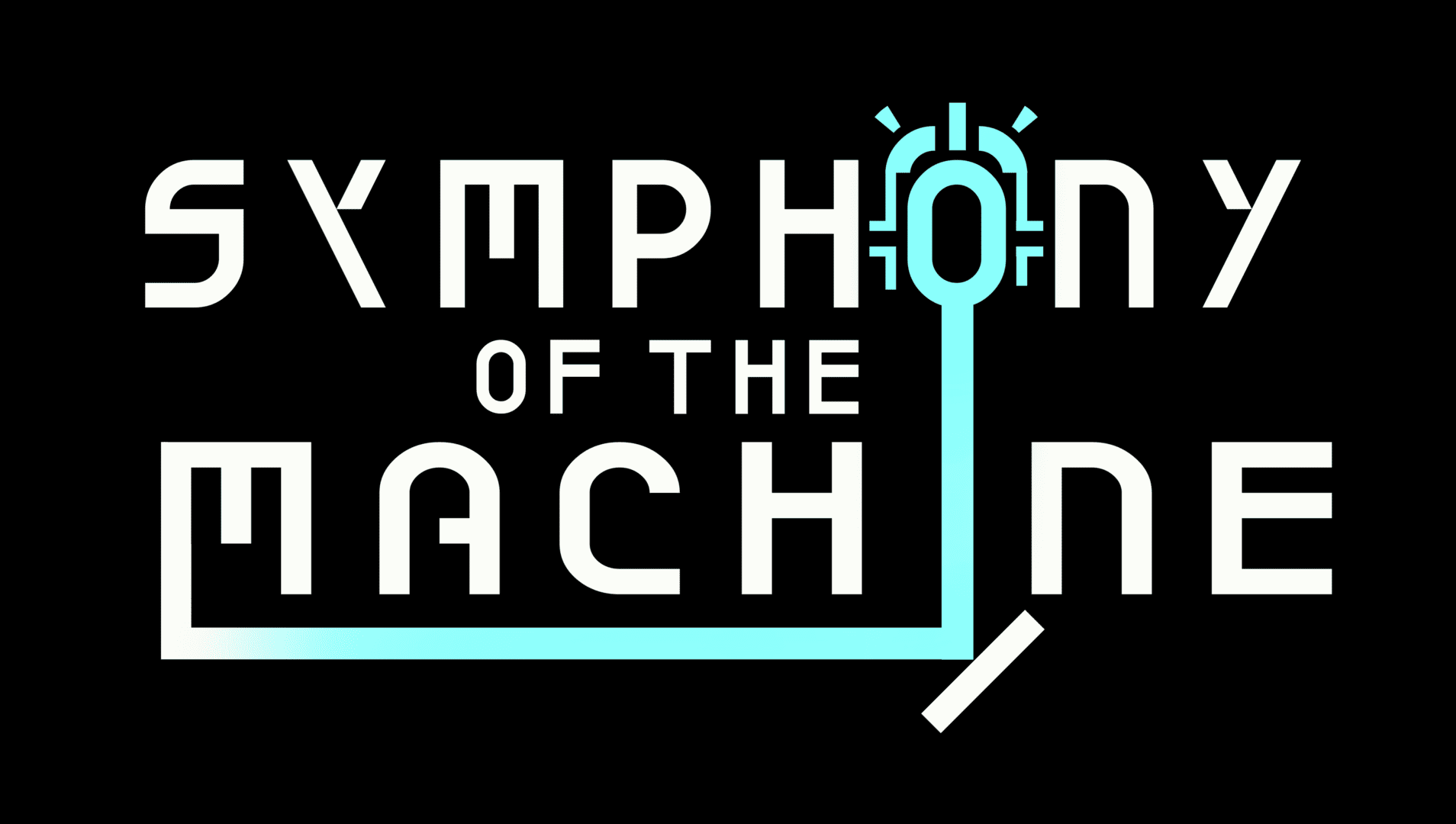VR is still at a stage in its life cycle that it doesn’t take much to wow you when you first don the headset and plunge headfirst into whatever virtual landscape you choose. Symphony of the Machine plays enough with that idea to first draw you in, and drip feeds enough in the way of challenge to keep you interested as you puzzle your way to restoring a planet’s ecosystem with some intuitive motion controls that’s deep on puzzles, easy on story.
You start Symphony of the Machine in a baron, rocky desert, a weird alien looking structure in the distance and an equally weird looking ball and plinth in your immediate vicinity. Like many before it, Symphony of the Machine takes the less is more approach to explaining what is going on, choosing to fully immerse you in your role as the silent protagonist by having you poke and prod your way into figuring out what to do next, at least during the early stages. Starting off in the desert, a nearby cave painting offers you some clues as to what to do next to proceed, but I found my biggest hindrance during the opening beats of the game were not so much in working out what to do, but more so with the actual hardware and the confines of my room. 
Trying to drop said ball into the relevant socket on the plinth on my left was a simple enough task, made infuriating by the limitations of the technology – so much so that I had to move my camera slightly and even then cheat a little by resetting the view to a standing one so that I could virtually shrink in the game world and complete the task sitting down. This was all as fiddly as it sounds, and although it was all over and done within the first five minutes, by this point I was beginning to panic that it was set to be the way my game was to play out – if the first puzzle threw so many problems at me, surely the rest of the game would be nigh on impossible? Luckily for me (and the sake of this review) these initial hiccups quickly ironed themselves out – a mixture of me finding the ideal position to play, and getting used to using the controls to my own ends.
Moving on towards the giant structure allowed me to get used to moving around the virtual world I now found myself in, using the tried and tested point and teleport system you will no doubt be familiar with – point a beam of light like a fishing line and then click to teleport to that location. Accessing the structure was then a simple enough process, and it was here that I felt my first wow moment of the game – placing a tablet in a socket and then pushing a symbol, the structure shuddered into life and I found myself being borne skyward in what was essentially an open sided elevator, and the view as I ascended caused my mouth to drop – not so much from what I could see, but in the way it all felt. Never before has it been so clear to me as to when I felt so completely absorbed by a game, and clearly this was Symphony of the Machines effort at getting it’s claws into me, and it worked. Symphony of the Machine had me from the point, I was officially immersed and interested in what was going to be thrown at me next. It is a slight shame then that this moment is never further expanded upon, and from this point on the game takes place mostly on this small platform which does seem like a missed trick having introduced what is clearly a world that is so intricately linked to the game itself.

It is here, having reached the top of the tower, that the game begins proper, introducing you to the core puzzle mechanics. A beam of light erupts skyward from the middle of the tower, and surrounding it are four symbols, that when the beam is deflected into each one causes the weather to change dynamically before your eyes. Deflecting the beam into one panel may make the weather change to blazing blue sky, but another will quickly drag the clouds in and create a shower of rain. These effects happen quickly and in real time, which is impressive, but it does feel a little limited in scope – no puddles will pool around you in the rain for example, however the planet does begin to change in appearance as the game progresses, becoming terraformed as you progress further through the game solving more puzzles.
The puzzles themselves are relatively simple to explain – the beam in the middle of the platform can be deflected by using panels, think mirrors, and later split into two by T-shaped pipes. These tools are introduced to you one at a time by a floating disc which basically serves as your assistant, who brings you the mirrors and pipes initially before delivering a pot of soil and a seed, which combine to make a potted plant like some drone working for a florists. As more puzzles ares solved more plants are introduced, and the appearance of the world begins to change to reflect this. It is here too that the controls begin to feel less cumbersome and more intuitive. Using the PlayStation Move controllers to grab and rotate objects and the face buttons to rotate your field of view all work as well as they should provided you have the patience to overcome some initial frustrations, and objects can be left floating in the air in handy to reach positions to be used again later. After getting to grips with it all you soon feel like a weather manipulating pro, whipping back and forth across the platform adjusting angles and positions so beams reflect as and where they should.
No sooner have you started to get used to bouncing the beam around the platform and zipping back and forth do things start to get interesting. Each time your friendly drone delivers you a plant to look after it will come with certain needs to meet in order for it to grow – the first few need simple conditions such as sunlight or rain, all simple enough, but as soon as you have got the hang of shifting the beam about to change the weather at will do new plants come along that need combinations of weather systems to be met, all the while your drone assistant introduces new mirrors and pipes as the puzzles get trickier allowing you to complete each one. This setup is a deceptively simple one, but it does not take too long to get the old grey matter ticking over, as activating one panel might cause a force field to appear and block the most obvious route to another one. The learning curve as these puzzles go from easy to extreme is quite steep, but one that is paced well enough to keep you engaged and not rage quit because of their difficulty. In fact I was a few hours in before I had to take a break, and as much as this was because I’d hit a particularly tricky puzzle it was as much to do with the fact my head had started to feel a bit funny and I had to have a rest as I still haven’t fully developed my VR-legs yet. To be fair, Symphony of the Machine is not the worst offender for making me feel VR queasy and it is here that the lack of story plays in its favor as it is easy to pick up and play later on (providing you remember to save – no auto save or checkpoints here).

After my earlier frustrations getting to grips with the controls and movement, my biggest complaint is largely a finicky one. To me the game seems to struggle to balance it’s gameplay goals with the limitations that the VR technology puts in place. The puzzles are easy to get to grips with and often it is obvious what you need to do, but the annoying aspect comes in the fiddly nature of the technology, and simply balancing what the game wants you to do and simply doing it. Often I would find I had overshot where I wanted to go and would have to press the face buttons to spin around a certain number of times, or there were times when I would overshoot completely and find myself perched on the edge of the platform balanced precariously and facing a vertigo inducing drop. Other times I would have an item in my hand, all set to solve a puzzle, would line myself up ready to position it and the item would suddenly snap back to a previous holding position on the platform meaning all my minute angling and positioning had been for nothing and I would have to go back and pick it up again.
All of these are minor complaints, and ones that are easy to overcome with practice and persistence, but the frustration is palpable when something doesn’t quite go to plan through no fault of your own. Further more, there are times when I felt like I needed to step back and plot out where I wanted the beam to go and navigate any obstacles in my way by taking an overall view of the puzzle in front of me, and this was further compounded by the fact that the puzzles themselves take place in such a relatively small area of space. Trying to get the optimum position to get an overview of what I was doing was tricky, made harder by the zooming about and spinning using the buttons – some may argue that this only adds to the realism as adding any overhead buttons or whatnot detracts from this and I would agree, but a viewing platform or some designated area that I could have went to to look at what I was doing would have been helpful, but maybe this is just me. This aspect sometimes makes the puzzles feel harder than they are, and make them harder to complete in the long run, which some would argue is only a good thing.
Symphony of the Machine PS4/PSVR Review
-
Overall - Very Good - 7.0/107/10
Summary

Symphony of the Machine is an enjoyable VR experience, one that quickly draws you in with an ambiguous story of planet regeneration and puzzle mechanics that work well and make good use of a technology that is still in it’s infancy. Some limitations are easily overcome with persistence and perseverance, but don’t expect any deep story-line or over the top quests here – Symphony of the Machine is designed as a pick up and play puzzler, and if that’s how you like your puzzles, it is definitely worth your time.
Review Disclaimer: This review was carried out using a digital copy of the game provided by the publisher. For more information, please read our Review Policy.
*Reviewed on a standard PS4















